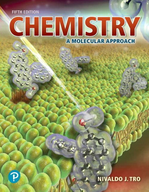Chemistry
Chemistry: A Molecular Approach 5th Edition solutions
Author: Nivaldo J. Tro
Publisher: Pearson
ISBN: 9780134874371
Buy the book
Select Chapter:
